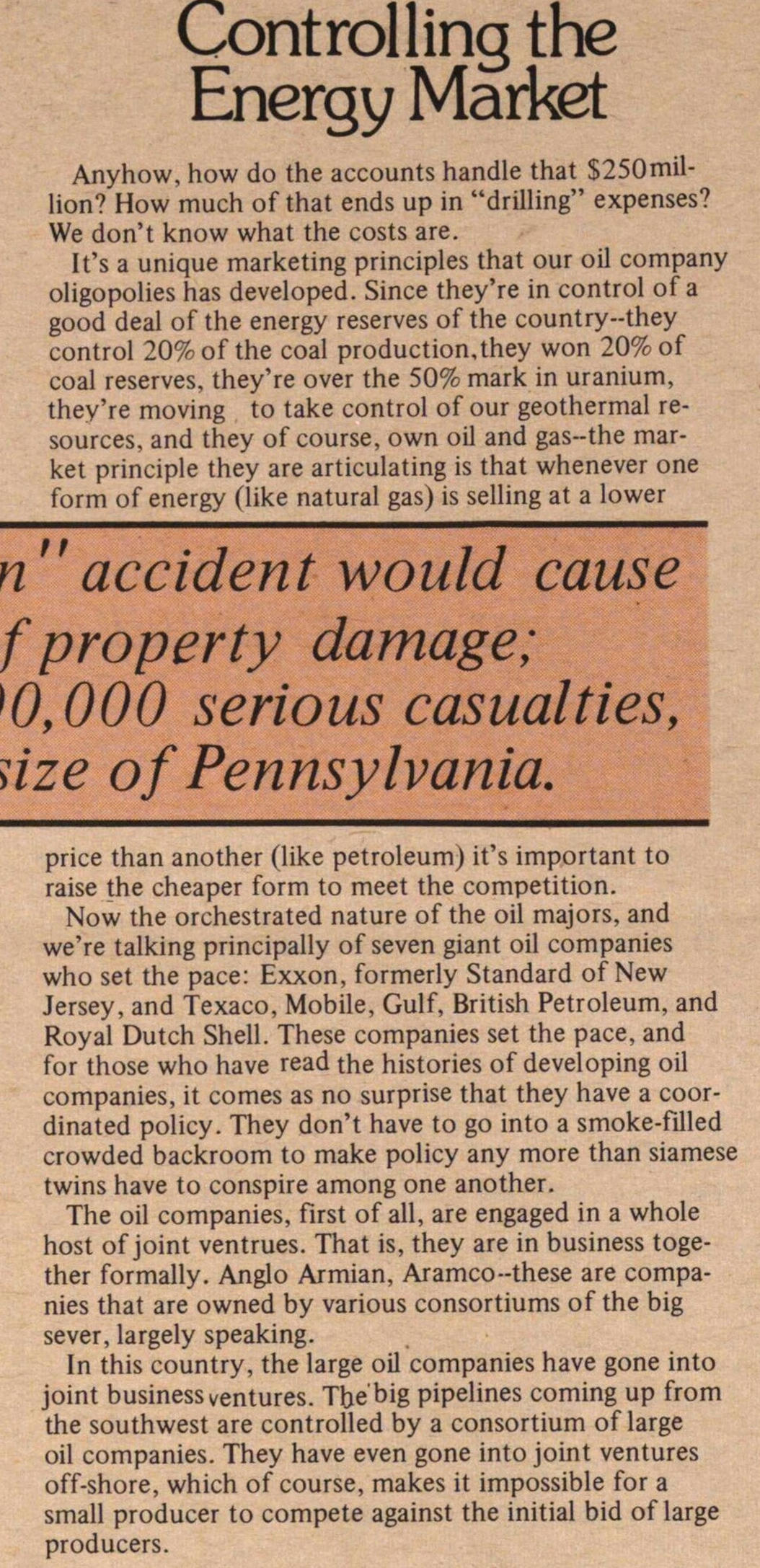Controlling The Energy Market

Controlling the Energy Market
Anyhow, how do the accounts handle that $250 million? How much of that ends of in "drilling" expenses? We don't know what the costs are.
It's a unique marketing principles that our oil company oligopolies has developed. Since they're in control of a good deal of the energy reserves of the country-they control 20% of the coal production, they won 20% of coal reserves, they're over the 50% mark in uranium, they're moving to take control of our geothermal resources, and they of course, own oil and gas-the market principle they are articulating is that whenever one form of energy (like natural gas) is selling at a lower price than another (like petroleum) it's important to raise the cheaper from to meet the competition.
Now the orchestrated nature of the oil majors, and we're talking principally of seven giant oil companies who set the pace: Exxon, formerly Standard of New Jersey, and Texaco, Mobile, Gulf, British Petroleum, and Royal Dutch Shell. These companies set the pace, and for those who have read the histories of developing oil companies, it comes as no surprise they have a coordinated policy. They don't have to go into a smoke-filled crowded backroom to make policy any more than Siamese twins have to conspire among one another.
The oil companies, first of all, are engaged in a whole host of joint ventures. That is, they are in business together formally. Anglo Armian, Aramco-these are companies that are owned by various consortiums of the big sever, largely speaking.
In this country, the large oil companies have gone into joint business ventures. The big pipelines coming up from the southwest are controlled by a consortium of large oil companies. They have even gone into joint ventures off-shore, which of course, makes it impossible for a small producer to compete against the initial bid of large producers.
Article
Subjects
Freeing John Sinclair
Old News
Ann Arbor Sun